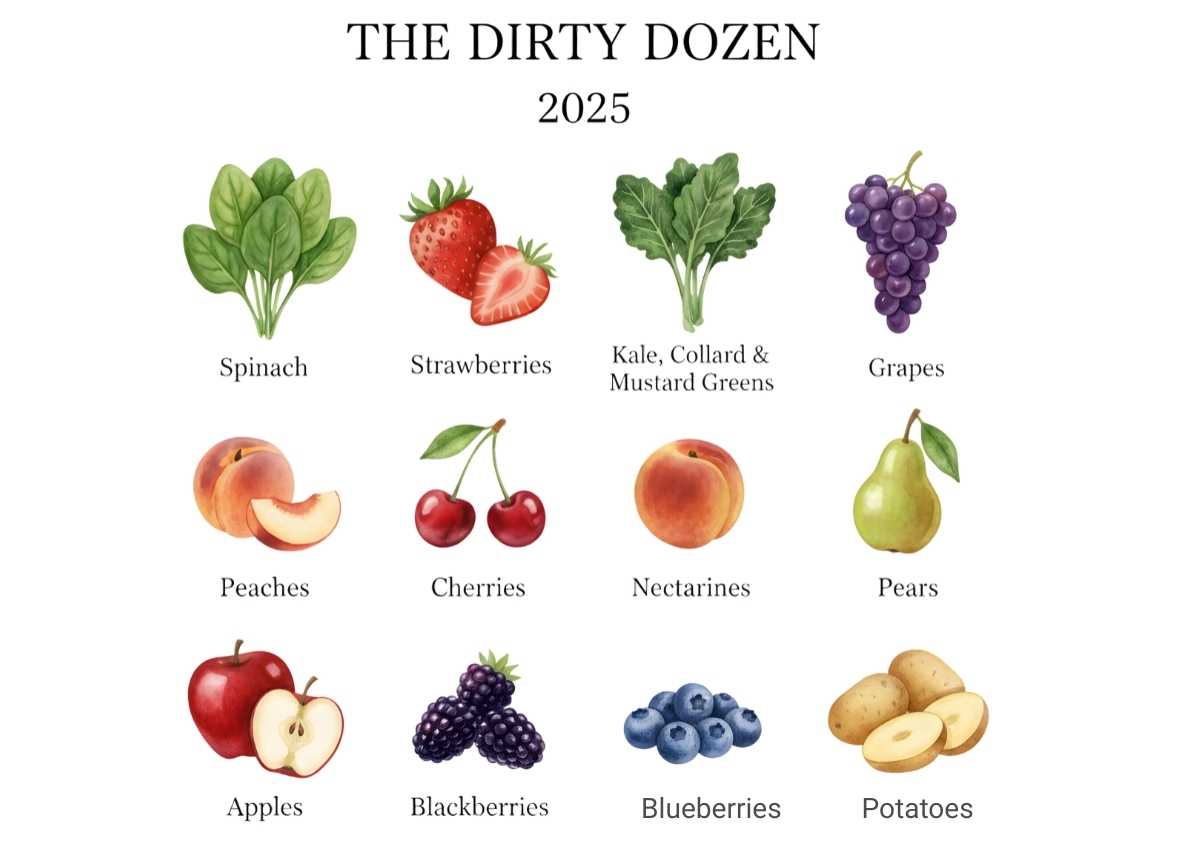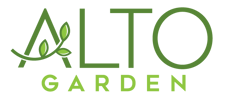May 3rd 2024
The Dirty Dozen: What’s Really on Your Food and How to Avoid It
Growing food out of the ground should be a natural process. Plant a seed, water, provide light. It’s been this way for thousands of years. There was a time when most families had a little farm, and grew food in family-sized batches. But these days commercial farms output most of the world’s produce. Farms over acres and acres of land, almost the size of entire towns. Growing food at this scale is a lot different than growing on a family-sized farm. Commercial farmers also are driven by the incentive to make money - which means maximizing yield. Commercial farmers are not paid for the quality of their produce, but by weight.
Over the years – these incentives put a lot of pressure on farmers to create methods to increase yield. One of these yield-maximizing tactics involves using chemicals to inhibit bugs, fungus, and unwanted weeds from impeding on crops. These chemicals are called pesticides, fungicides and herbicides and unfortunately – they are VERY commonly used on the food we put in our bodies.
There are numerous studies that show how these chemicals have a detrimental effect on our nervous system, reproductive system, and increase genetic damage in humans. A number of studies link pesticides to congenital defects and premature births. You may have also heard of several court cases involving the well-known herbicide “Roundup” with plaintiffs being awarded millions and millions of dollars for their cancers. Cancers which developed while using this product.

What Is the Dirty Dozen?
Despite the known impact of these chemicals, they continue to be used in the food we eat. The Environmental Working Group (EWG) is an environmental and health advocacy group who, since 2004, have published a list of foods which are most contaminated.
Dubbed the “Dirty Dozen” – the list includes spinach, kale, bell peppers, apples, green beans and cherries. Topping off the list as the #1 contaminated food is strawberries. The Dirty Dozen list really does give one pause – as to what we are really eating.
The EWG’s 2025 Dirty Dozen list includes:
- Strawberries
- Spinach
- Kale, Collard, and Mustard Greens
- Grapes
- Peaches
- Cherries
- Nectarines
- Pears
- Apples
- Blackberries
- Blueberries
- Potatoes

Both organic and non-organic food is grown with pesticides. The difference is, organic food is sprayed with organic pesticide. Some pesticides are healthier for you than others. Goodness. If you ask us, that is crazy!
Grow Cleaner Food with a Hydroponic Tower
This is why the cleanest, healthiest, most nutritious food you can eat is food you’ve grown yourself. To go back to the way it was originally done, with small family-sized farms. Hydroponic tower gardens are an easy way to get started. Since hydroponic farms are easily brought indoors, there’s no need for pesticides. And since hydroponic towers grow vertically, there’s no need for herbicides either. But in truth – you would never spray your food with chemicals regardless!
Start Your Tower Garden!
Transform the way you eat. Grow your own clean, nutritious produce at home using a simple hydroponic tower system.
Shop NowFinal Thoughts
With a hydroponic tower – you are in total control of how your food is grown and what goes on it. It will produce the best food you could possibly eat. Better tasting food too. Don’t add to your everyday stress by worrying what you’re putting in your mouth. You can eat more wholesome and natural food, with clean hydroponic produce growing in your very own home.
FAQs
- How can a hydroponic tower help me avoid Dirty Dozen foods?
You can grow your own fresh food indoors without soil or pesticides with a hydroponic tower. Your fruits and vegetables stay clean and free of chemicals because you control the environment they grow in. It's one of the simplest and most dependable ways to stay away from the Dirty Dozen foods and eat real, natural fruits and vegetables. - What can I grow in a hydroponic tower garden at home?
In a hydroponic tower garden, you can grow a lot of different fruits and vegetables, like strawberries, lettuce, herbs, kale, spinach, peppers, and even tiny tomatoes. It works great to replace a lot of the Dirty Dozen fruits and vegetables with fresh, pesticide-free fruits and vegetables that you grow yourself. - How can a hydroponic tower help reduce pesticide exposure?
You can grow your own food indoors with a hydroponic tower that uses nutrient-rich water instead of soil. There is no need for harmful pesticides or herbicides because it is a closed system that doesn't use soil. It's one of the simplest ways to eat fresh, clean fruits and vegetables without worrying about the Dirty Dozen.




